Refine search
Actions for selected content:
23990 results in Ancient history
Bibliography
-
- Book:
- Greek Religion and Cults in the Black Sea Region
- Published online:
- 16 May 2018
- Print publication:
- 31 May 2018, pp 279-310
-
- Chapter
- Export citation
Chapter 2 - Crimean Parthenos in Greece, Anatolia and the Mediterranean World
-
- Book:
- Greek Religion and Cults in the Black Sea Region
- Published online:
- 16 May 2018
- Print publication:
- 31 May 2018, pp 61-95
-
- Chapter
- Export citation
Illustrations
-
- Book:
- Greek Religion and Cults in the Black Sea Region
- Published online:
- 16 May 2018
- Print publication:
- 31 May 2018, pp vi-vii
-
- Chapter
- Export citation
Chapter 3 - Artemis of Ephesus in the Bosporan Kingdom
-
- Book:
- Greek Religion and Cults in the Black Sea Region
- Published online:
- 16 May 2018
- Print publication:
- 31 May 2018, pp 96-133
-
- Chapter
- Export citation
Contents
-
- Book:
- Greek Religion and Cults in the Black Sea Region
- Published online:
- 16 May 2018
- Print publication:
- 31 May 2018, pp v-v
-
- Chapter
- Export citation
Chapter 6 - Epilogue: Artemis, Aphrodite and Demeter
-
- Book:
- Greek Religion and Cults in the Black Sea Region
- Published online:
- 16 May 2018
- Print publication:
- 31 May 2018, pp 256-278
-
- Chapter
- Export citation
Introduction: Aims, Contexts and Connectivity
-
- Book:
- Greek Religion and Cults in the Black Sea Region
- Published online:
- 16 May 2018
- Print publication:
- 31 May 2018, pp 1-14
-
- Chapter
- Export citation
Maps
-
- Book:
- Greek Religion and Cults in the Black Sea Region
- Published online:
- 16 May 2018
- Print publication:
- 31 May 2018, pp viii-viii
-
- Chapter
- Export citation
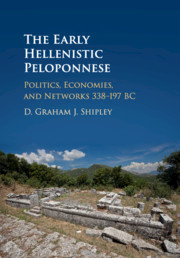
The Early Hellenistic Peloponnese
- Politics, Economies, and Networks 338–197 BC
-
- Published online:
- 30 May 2018
- Print publication:
- 14 June 2018
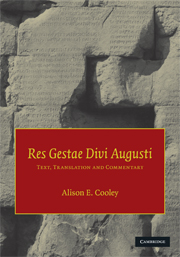
Res Gestae Divi Augusti
- Text, Translation, and Commentary
-
- Published online:
- 28 May 2018
- Print publication:
- 14 May 2009
-
- Textbook
- Export citation
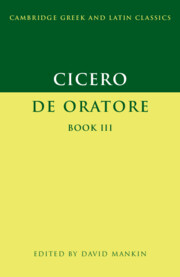
Cicero: De Oratore Book III
-
- Published online:
- 28 May 2018
- Print publication:
- 10 March 2011
-
- Textbook
- Export citation

Herodotus: Histories Book VIII
-
- Published online:
- 28 May 2018
- Print publication:
- 13 December 2007
-
- Textbook
- Export citation

An Introduction to the New Testament and the Origins of Christianity
-
- Published online:
- 28 May 2018
- Print publication:
- 10 July 2002
-
- Book
- Export citation
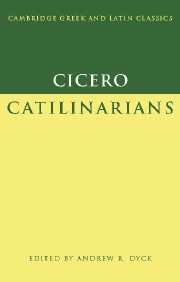
Cicero: Catilinarians
-
- Published online:
- 28 May 2018
- Print publication:
- 10 April 2008
-
- Textbook
- Export citation

Pliny the Younger: 'Epistles' Book II
-
- Published online:
- 28 May 2018
- Print publication:
- 21 November 2013
-
- Textbook
- Export citation
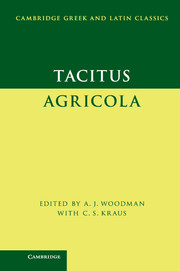
Tacitus: Agricola
-
- Published online:
- 28 May 2018
- Print publication:
- 04 September 2014
-
- Textbook
- Export citation
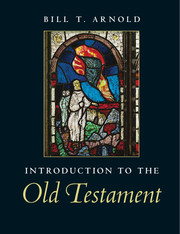
Introduction to the Old Testament
-
- Published online:
- 28 May 2018
- Print publication:
- 07 April 2014
-
- Textbook
- Export citation
Bibliography
-
- Book:
- Bede Part 2
- Published by:
- Amsterdam University Press
- Published online:
- 11 December 2020
- Print publication:
- 25 May 2018, pp 293-314
-
- Chapter
- Export citation
Bible: Aids to Biblical Study
-
- Book:
- Bede Part 2
- Published by:
- Amsterdam University Press
- Published online:
- 11 December 2020
- Print publication:
- 25 May 2018, pp 11-16
-
- Chapter
- Export citation
Lost Works
-
- Book:
- Bede Part 2
- Published by:
- Amsterdam University Press
- Published online:
- 11 December 2020
- Print publication:
- 25 May 2018, pp 277-278
-
- Chapter
- Export citation
